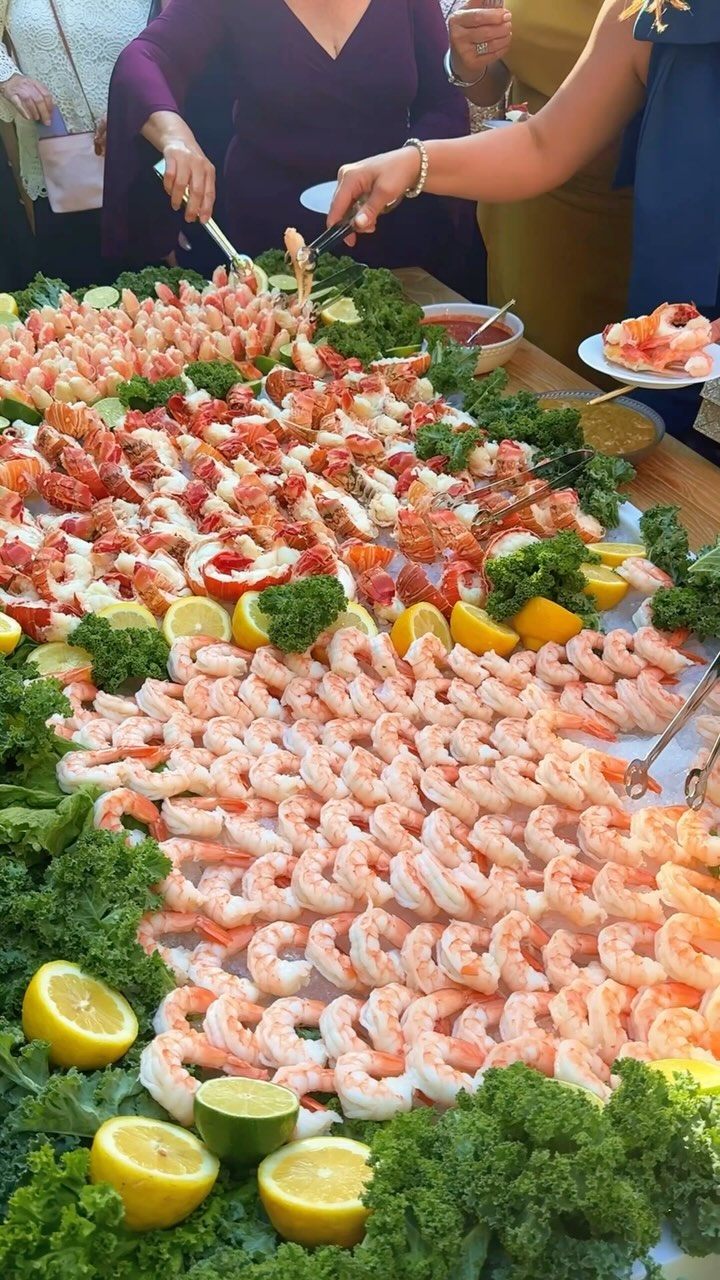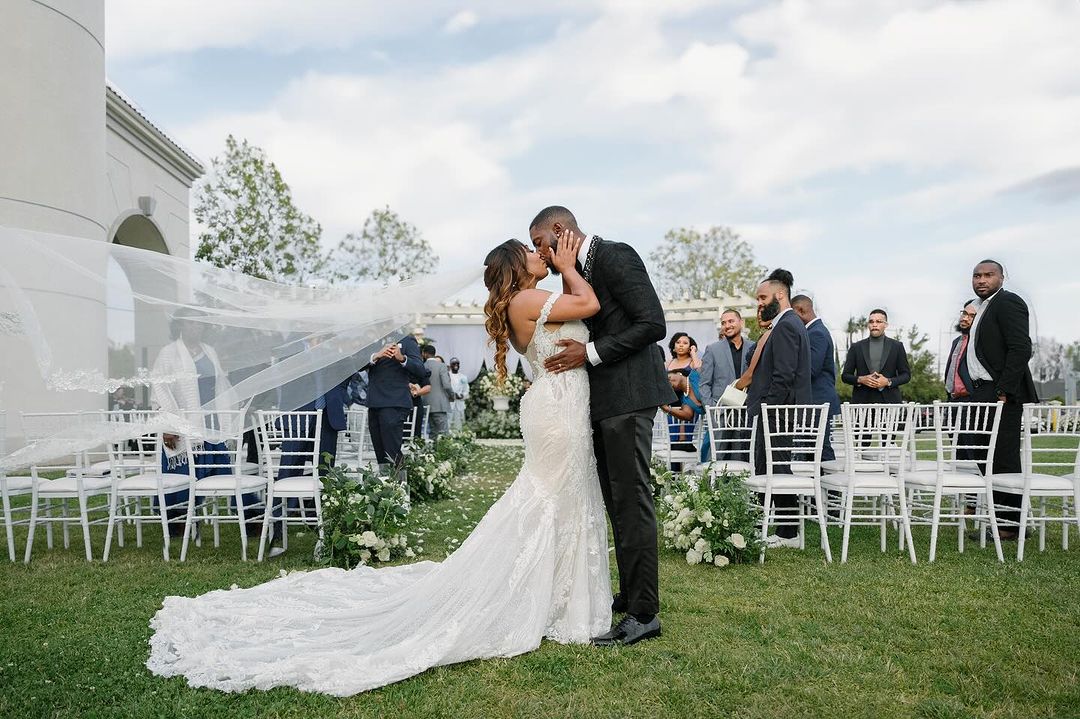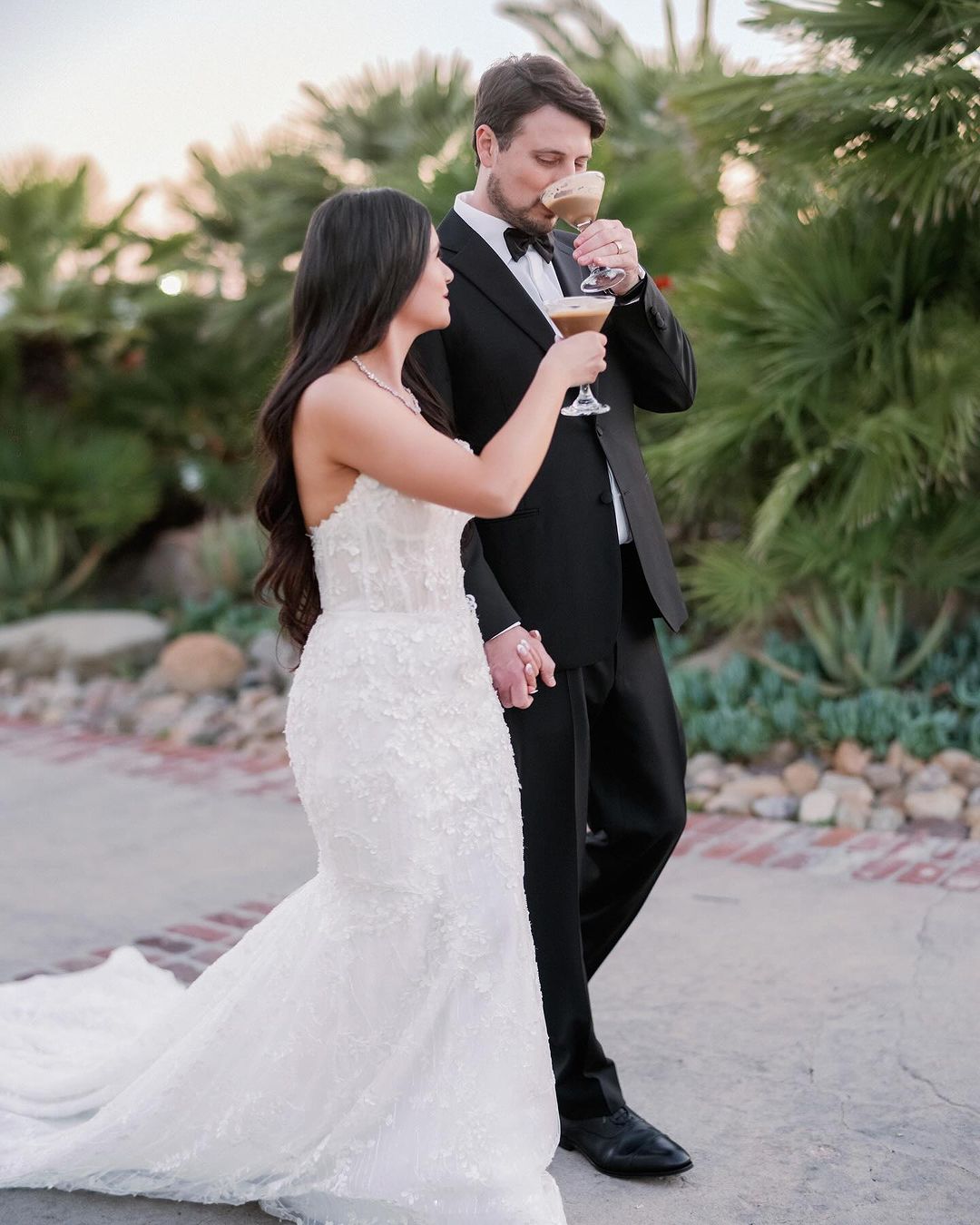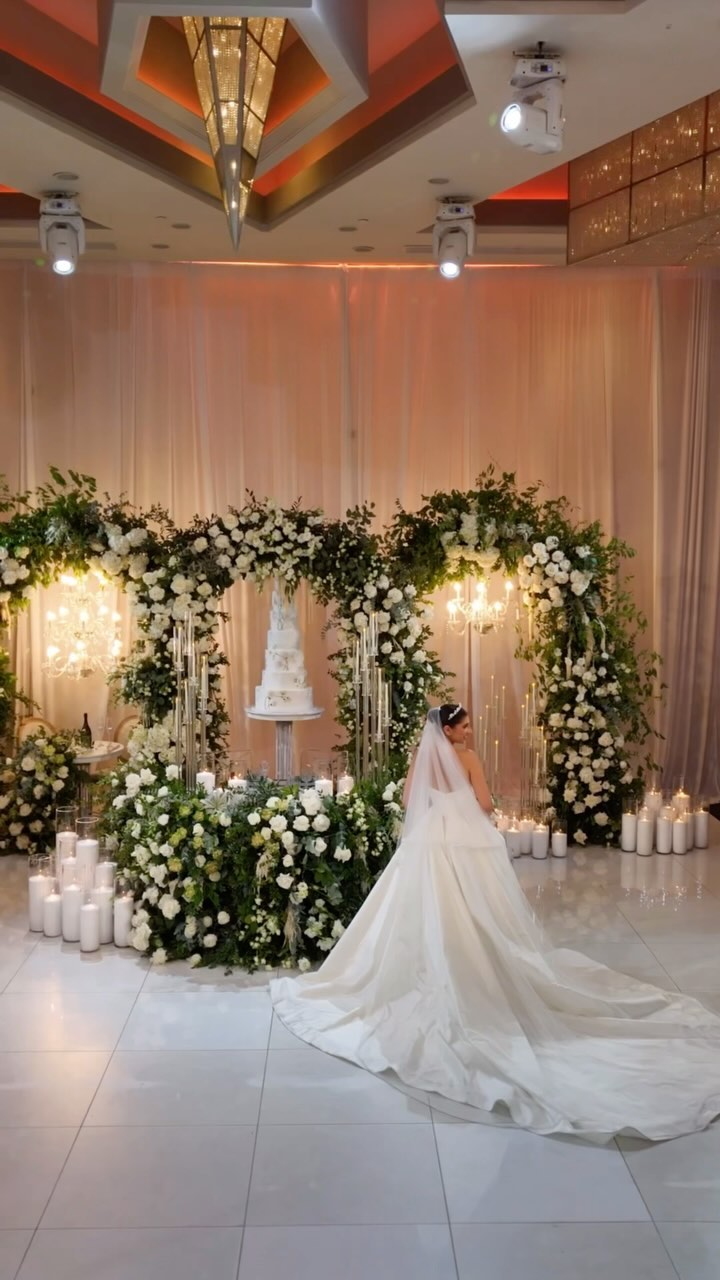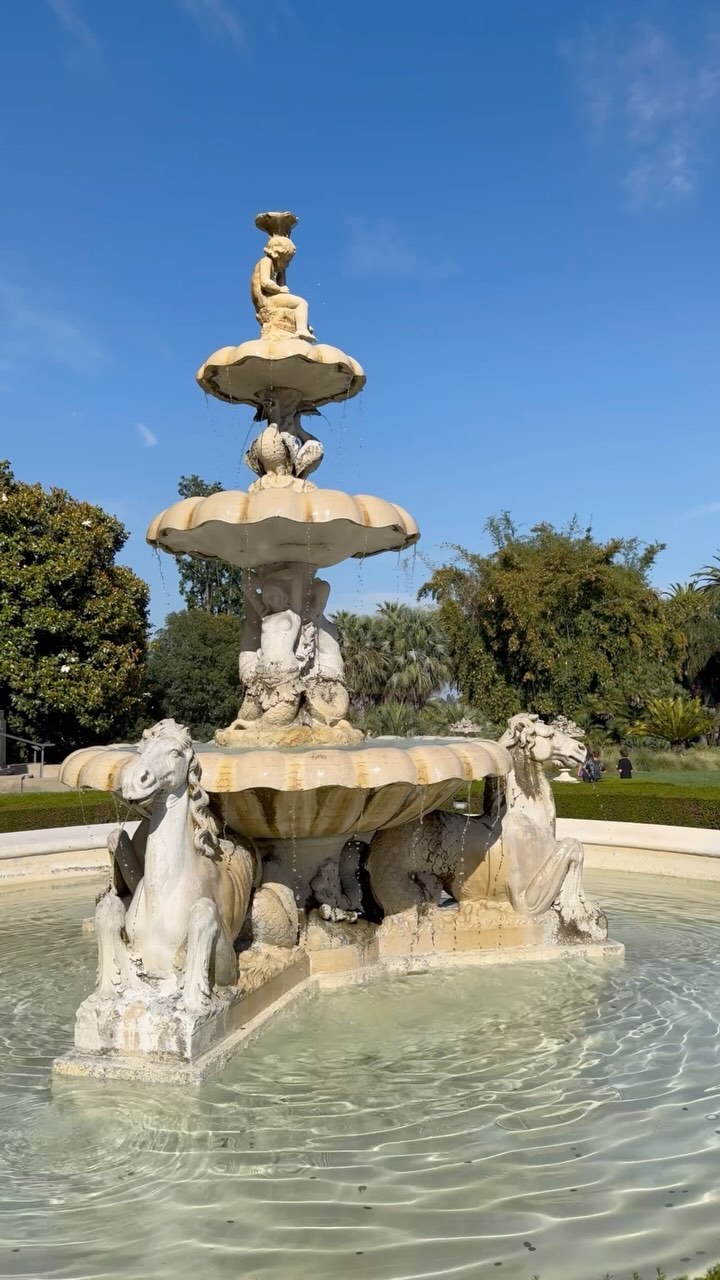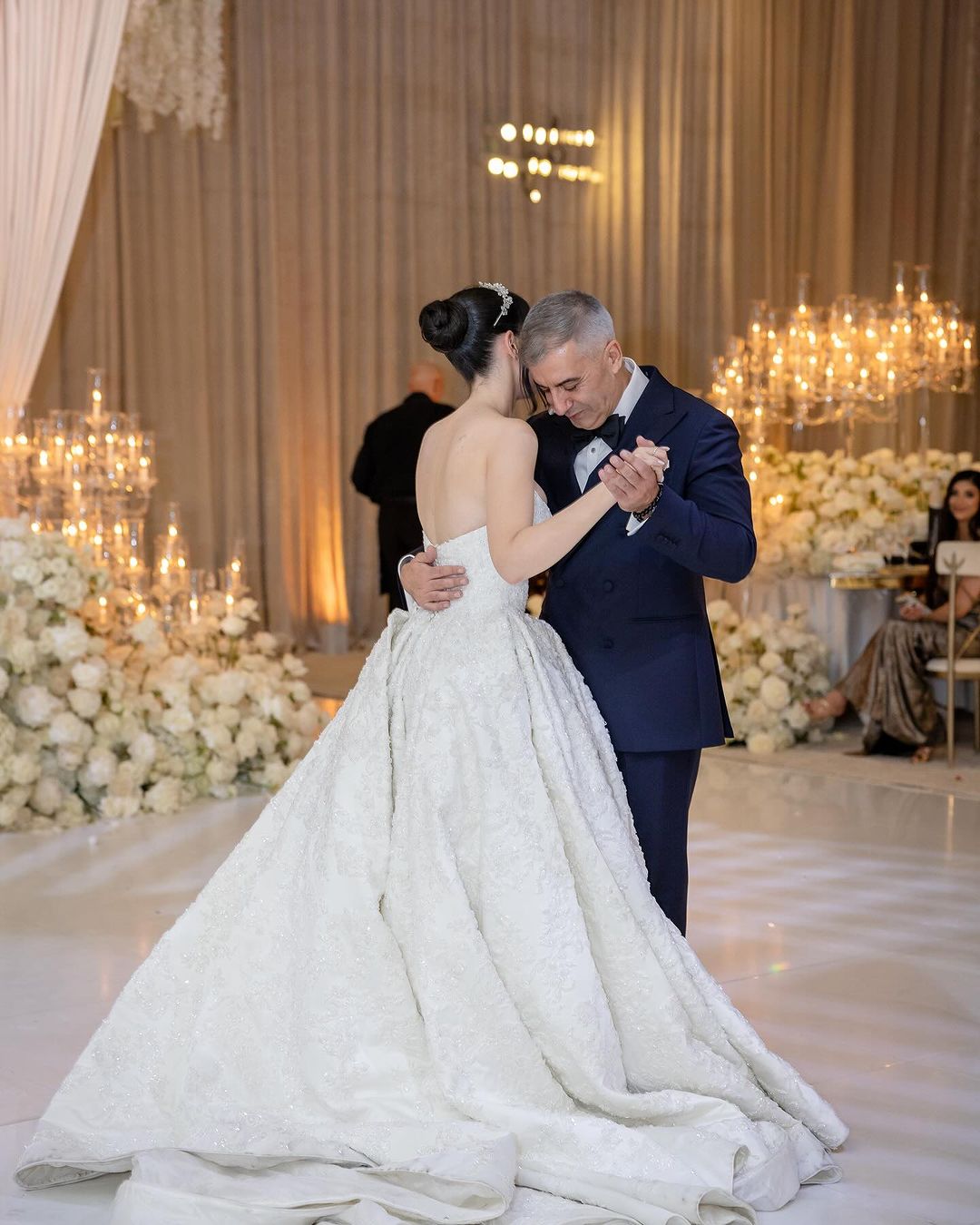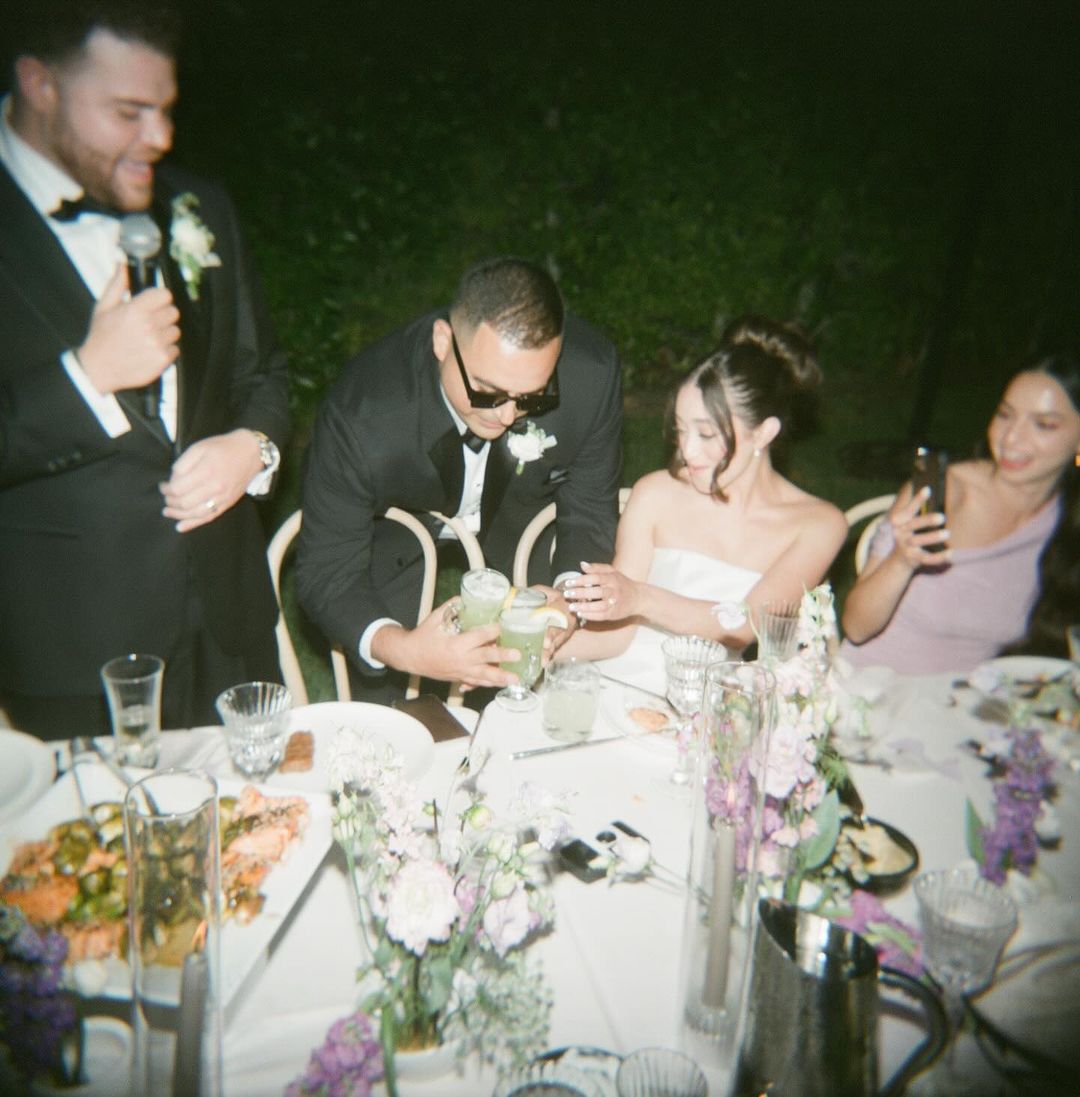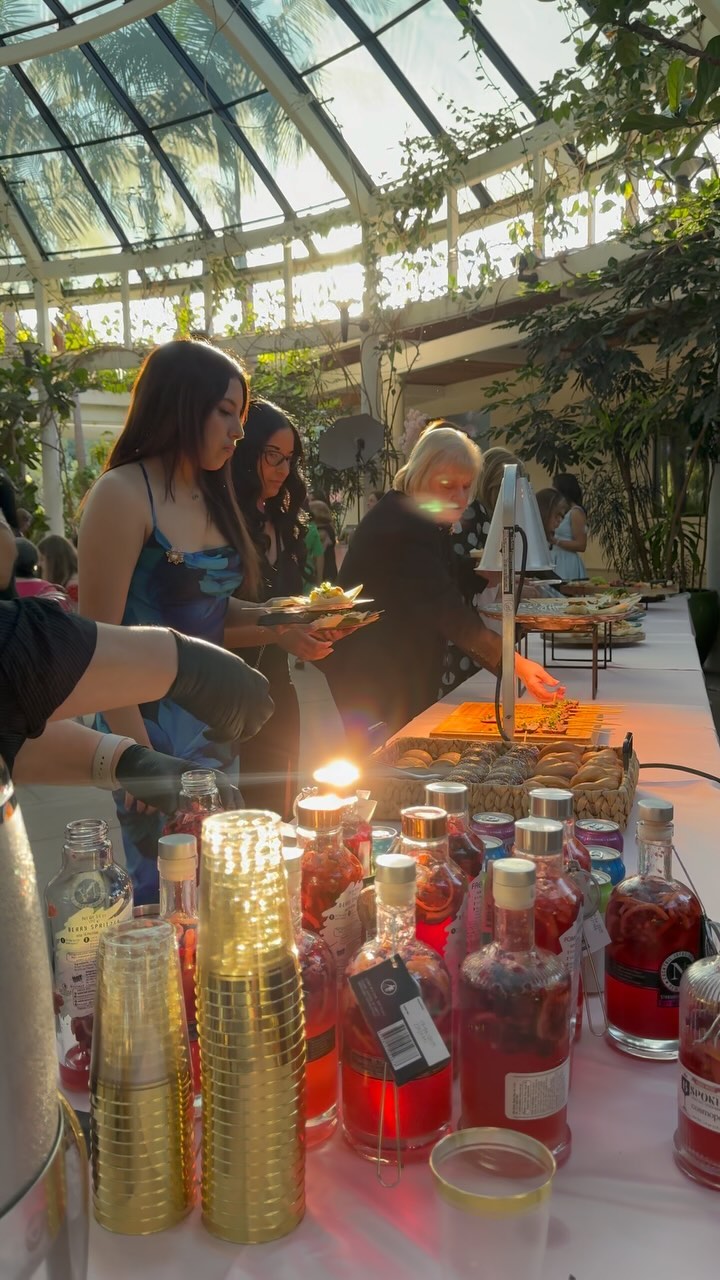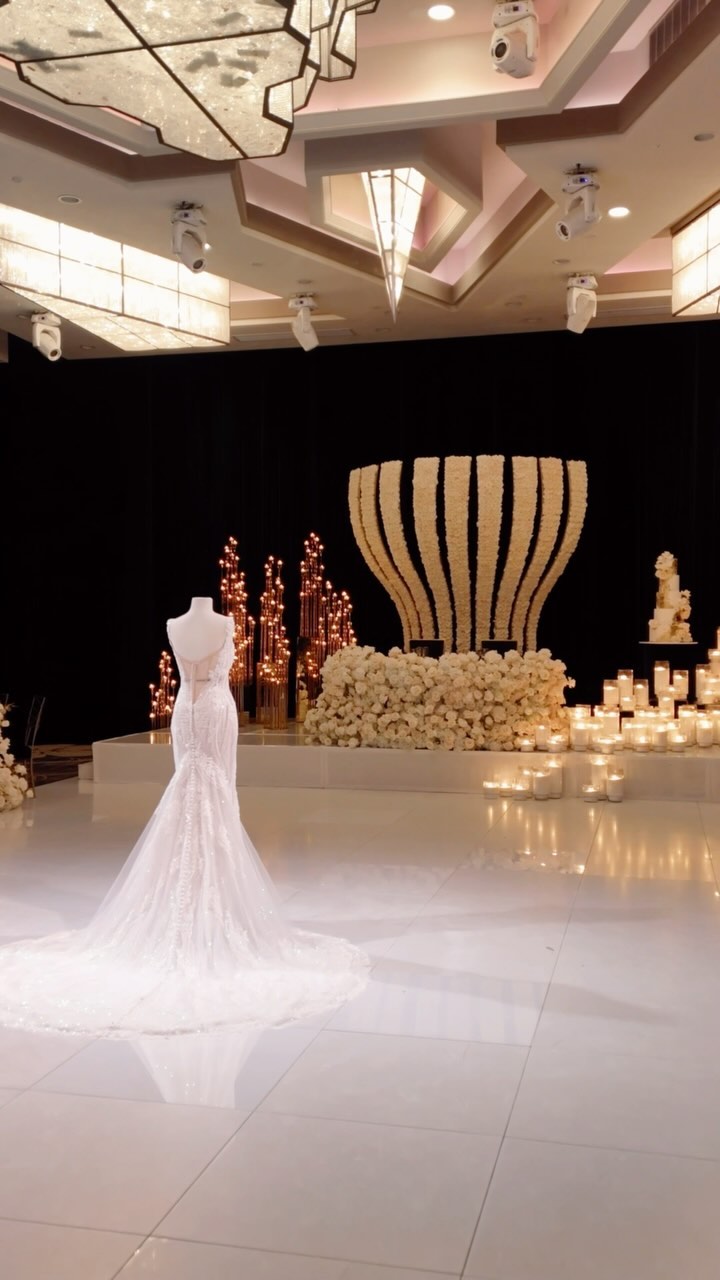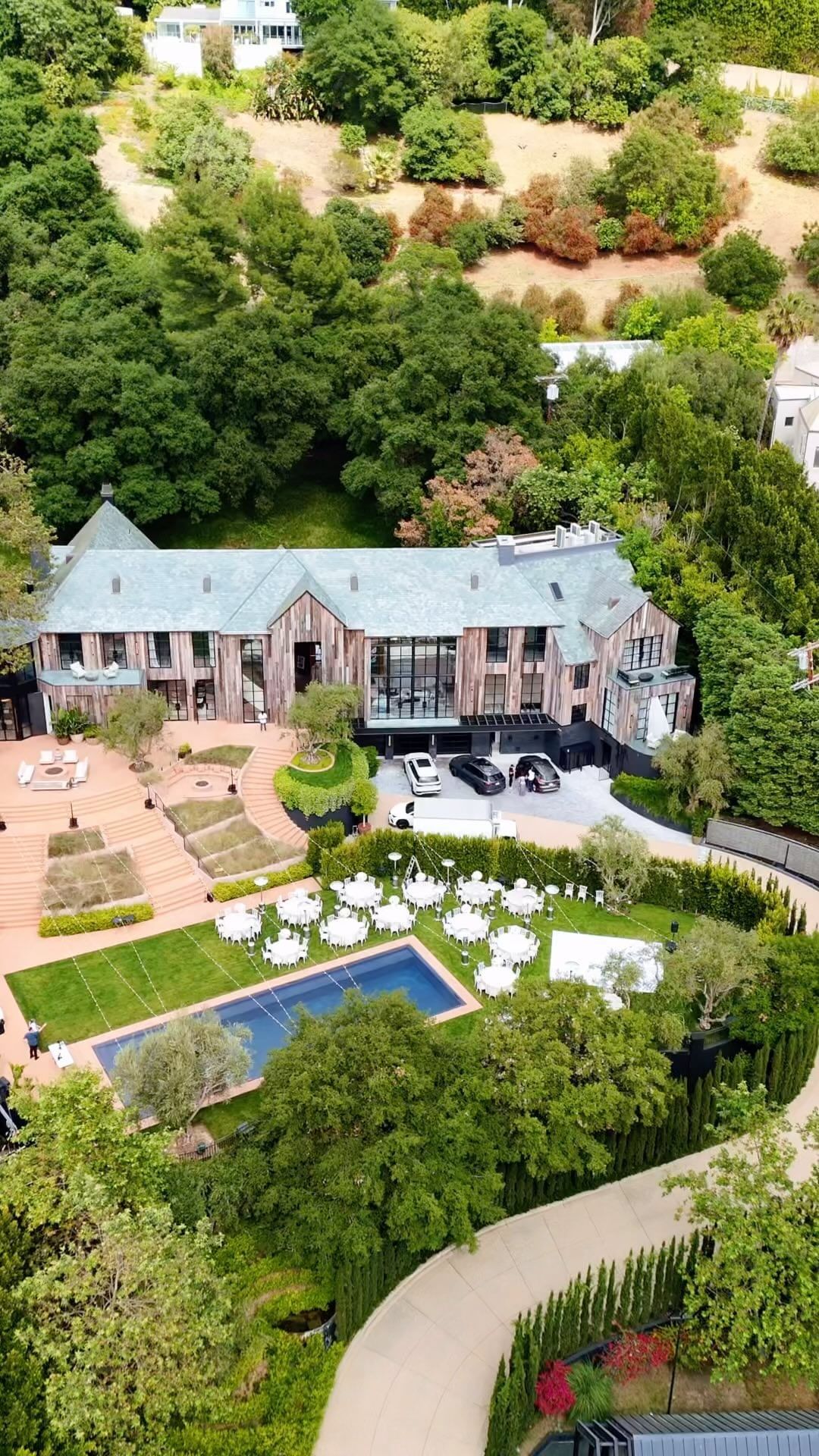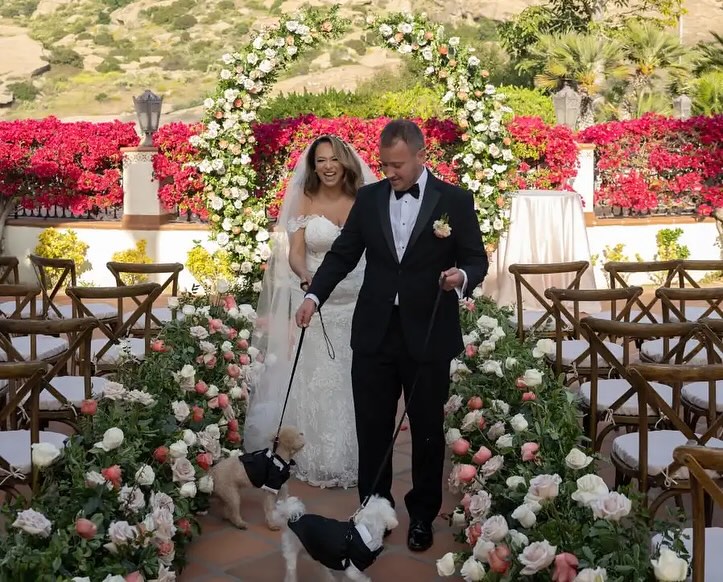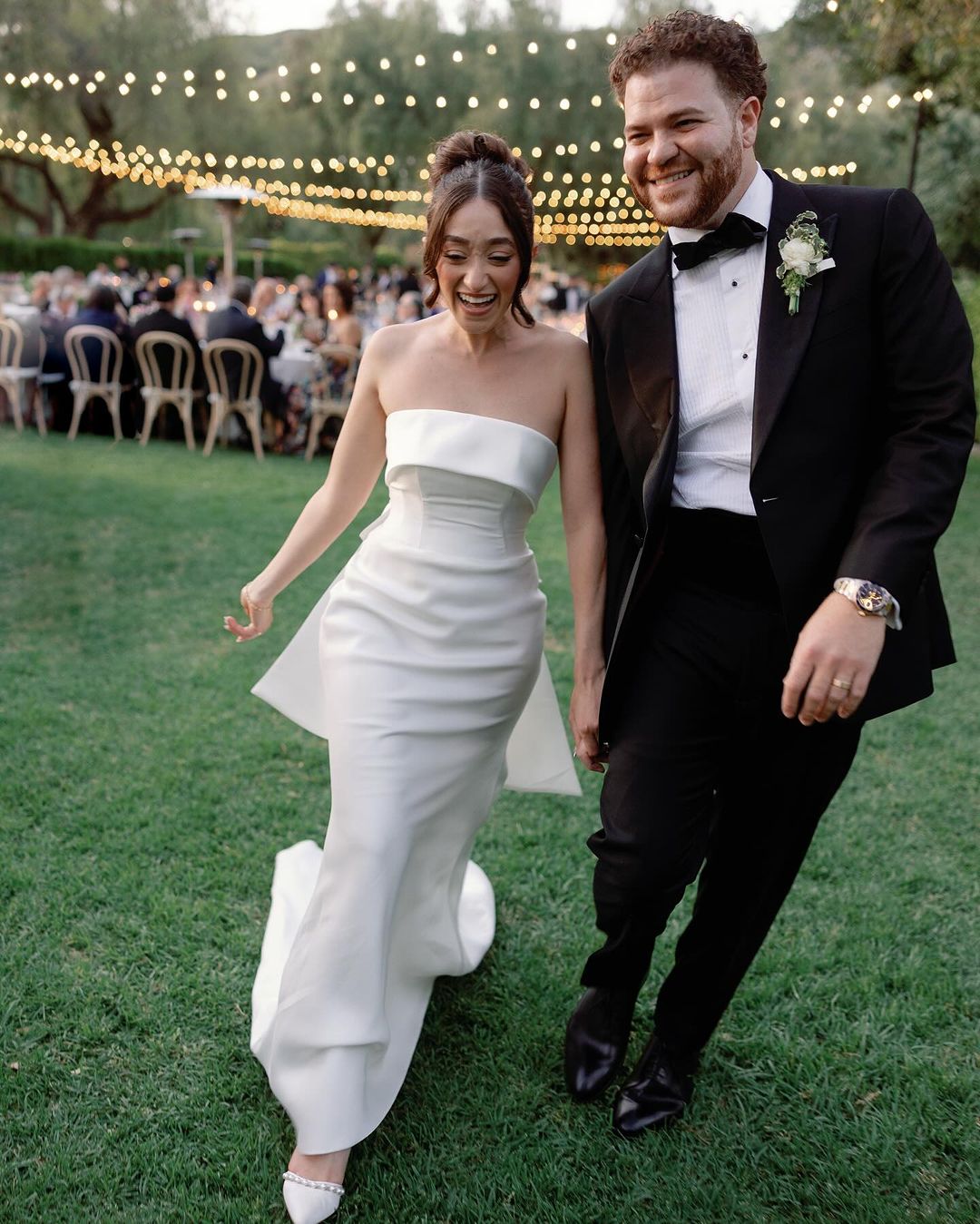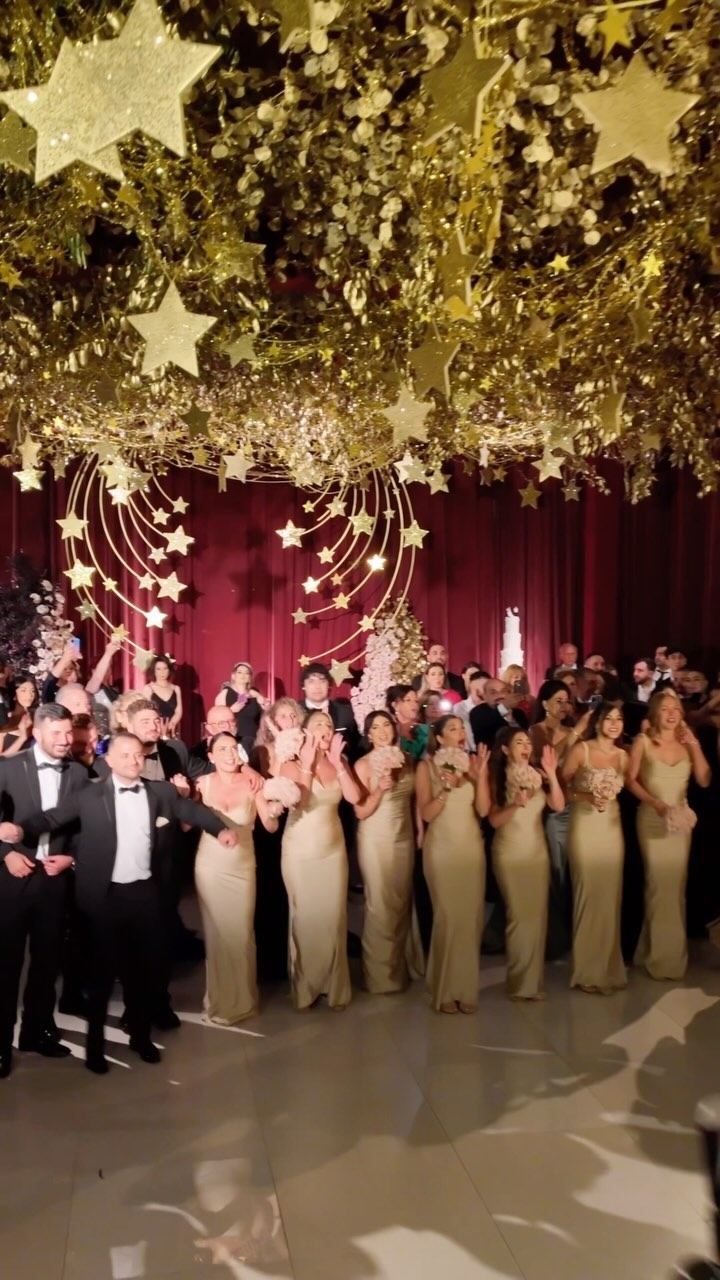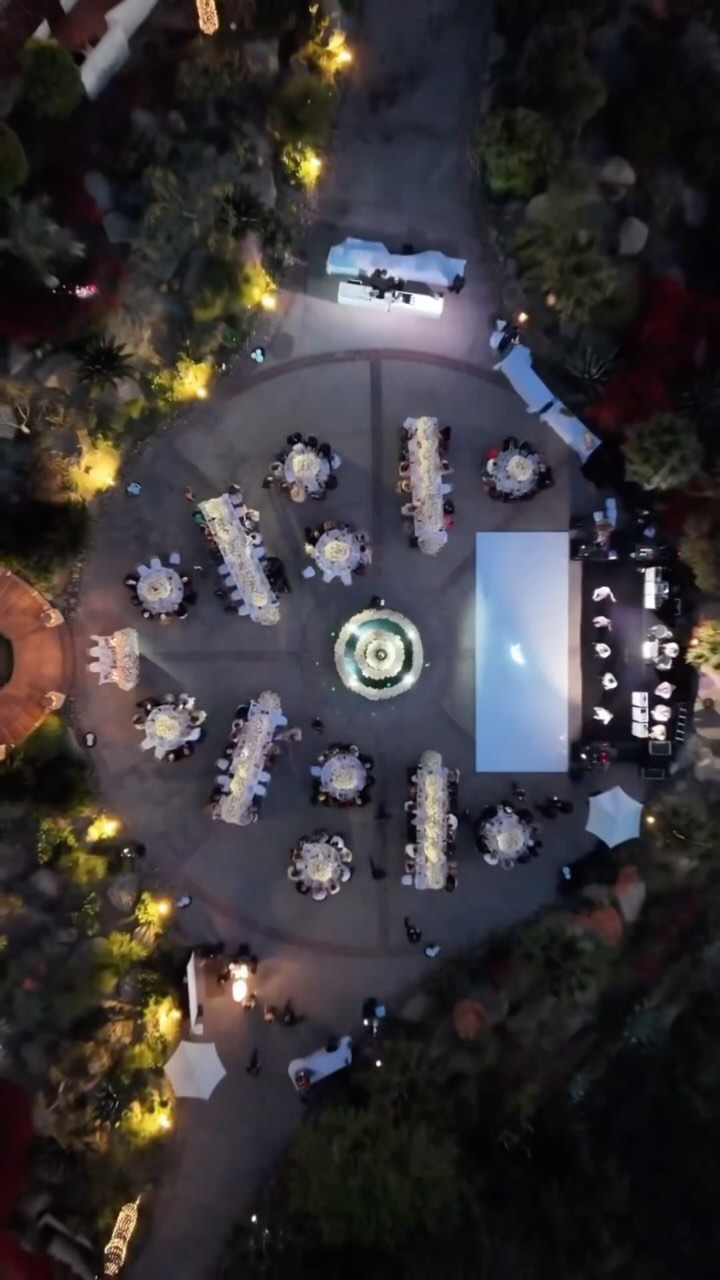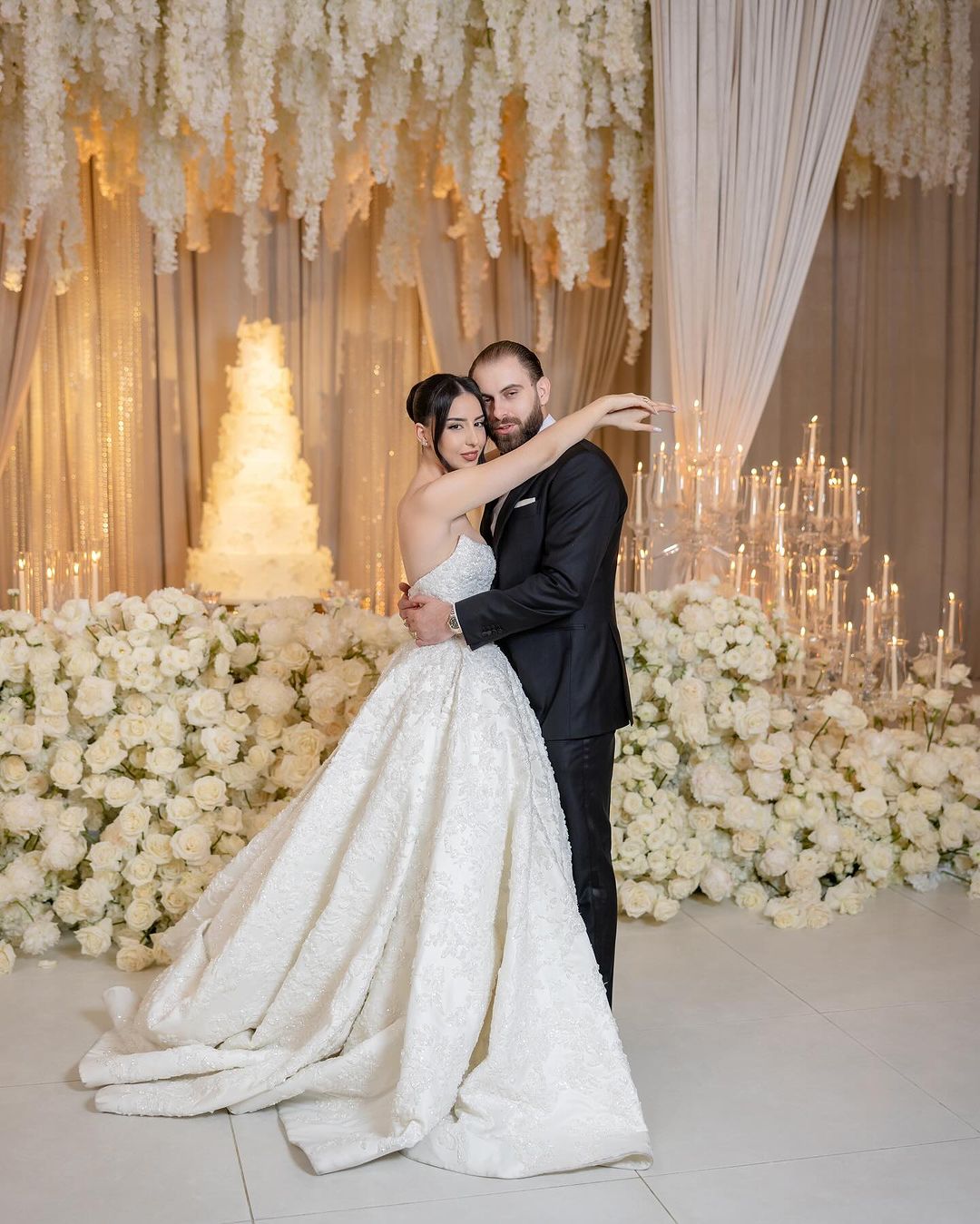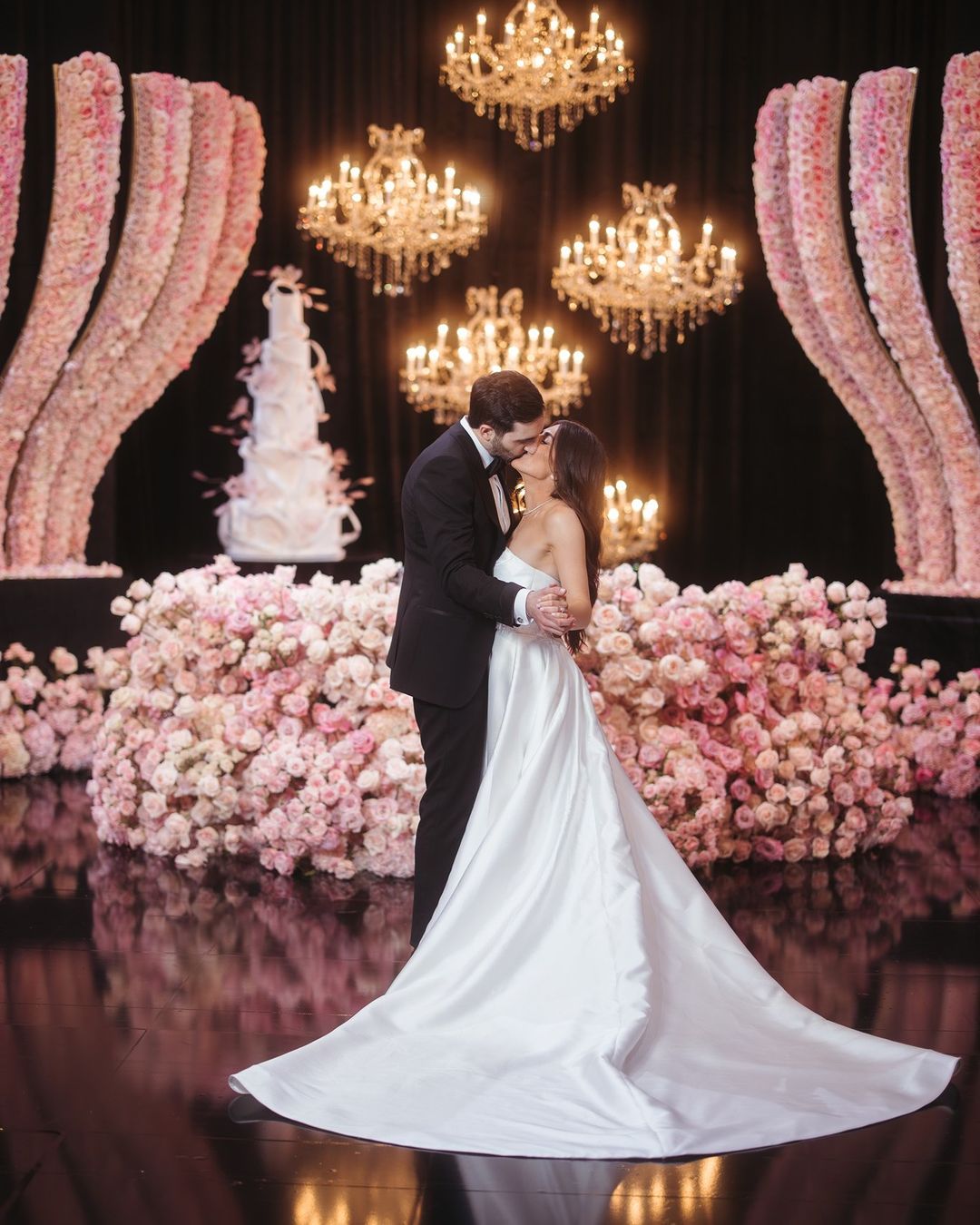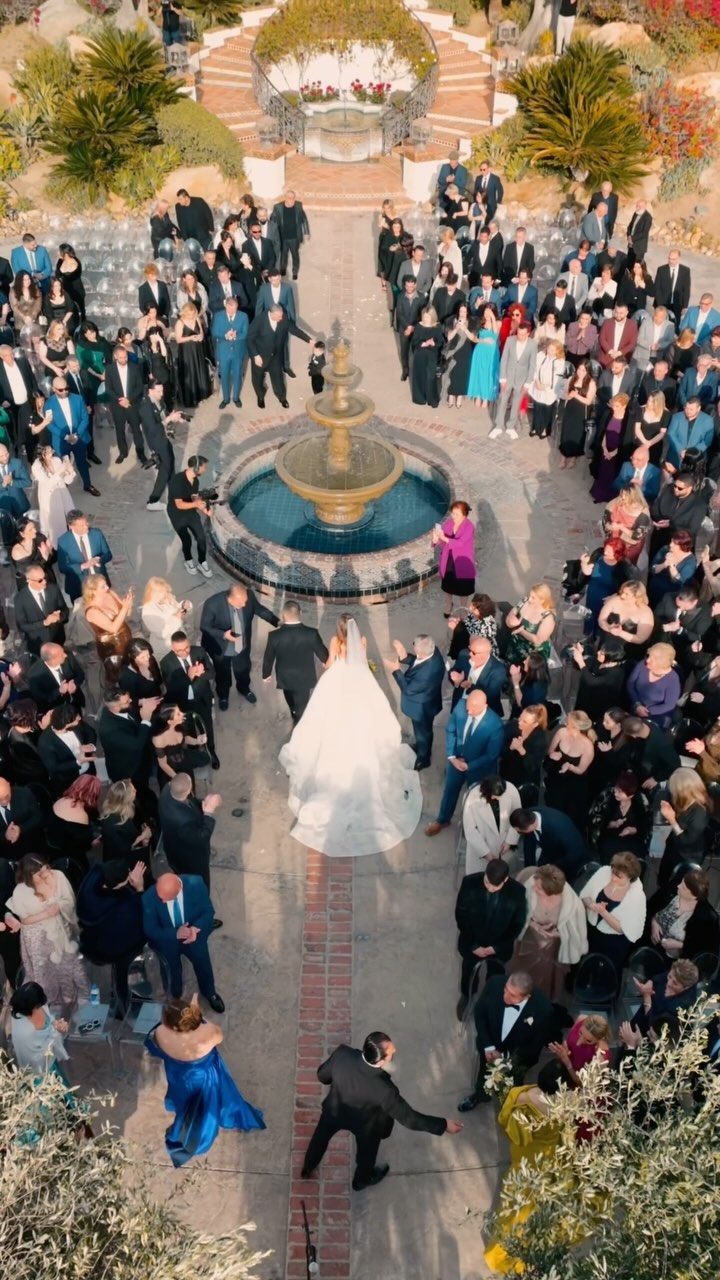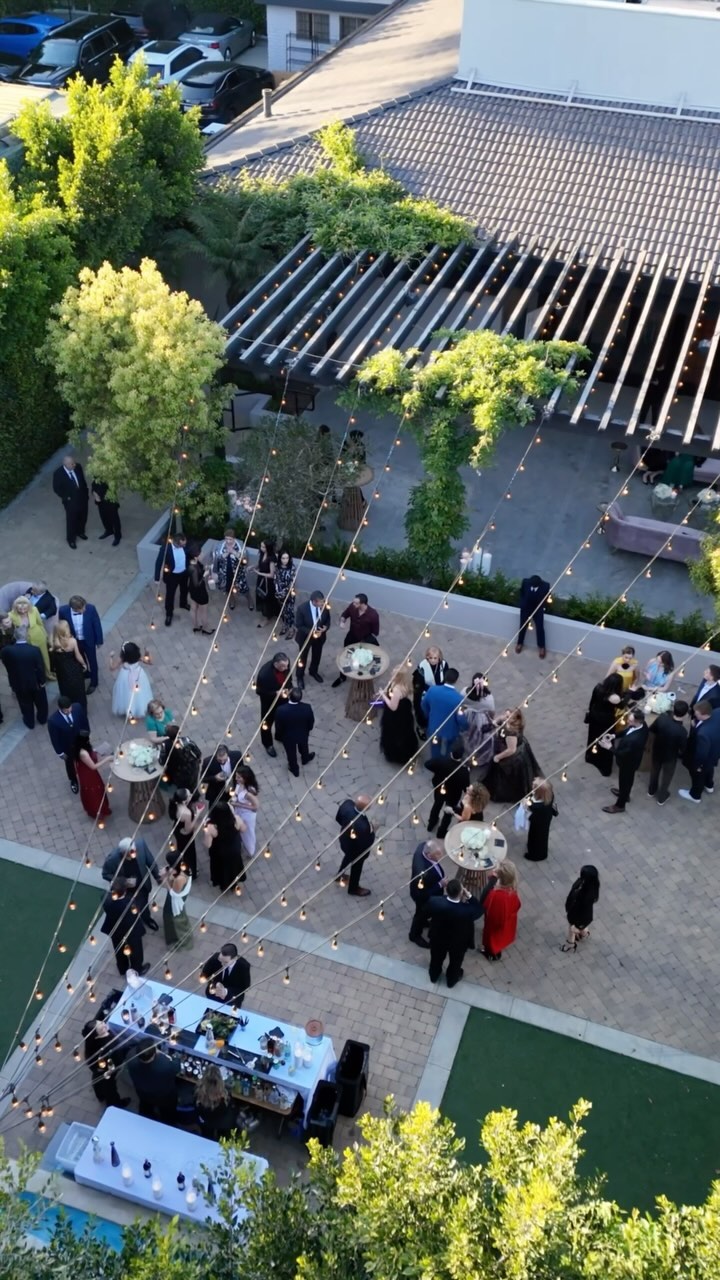Cultures around the world incorporate a variety of traditions into their weddings. From the way the bride and groom are greeted by each other’s families to the festivities at the wedding reception, traditions differ between countries and from region to region. Studying the way other cultures or the cultures of your ancestors commemorate marriages can give you unique ideas for your own celebration.
The Importance of Wedding Traditions
Although some wedding traditions are losing popularity among young couples, many of the most memorable are still being practiced. This is particularly true in cultures where ceremony and tradition are prized and both couples-to-be and their families look forward to specific elements of wedding festivities. By sticking with tradition, you:
- Preserve time-honored cultural norms
- Express symbolic representations of important elements of married life
- Participate in something meaningful with your groom
- Give the entire wedding party the chance to join in familiar festivities
- Honor the culture of your family
- Create lasting memories with personal and cultural significance
Whether you and your groom are from the same culture or two very different backgrounds, your wedding day is the perfect time to do something special to memorialize the start of your new life together.

You don’t have to incorporate every cultural tradition, but you may wish to include those with the most meaning for you and your groom. Talking with your families about the traditions they remember and love will help you appreciate the background of each custom and make it easier to decide which ones to include. Once you have a better understanding of why each tradition continues to be upheld, you can start planning the perfect wedding to highlight the best of your culture.
Tradition, Culture and Respect
Before adding any cultural wedding tradition into your celebration, familiarize yourself with its significance. Many wedding practices involve specific religious rituals or beliefs, and it’s not generally appropriate to copy these traditions if you don’t share the same beliefs. Be discerning about what you choose, and keep in mind some guests may not be comfortable participating in certain practices.
Armenian Wedding Traditions
Armenia is located in the South Caucasus area of Eurasia between Georgia, Turkey and Iran and has been occupied by many different cultures throughout history. Today, the vast majority of Armenians are part of the Apostolic church, and a small minority is Catholic. Religious beliefs and affiliations influence some of their basic wedding traditions, but others have grown out of the culture itself and serve to make the celebrations more interesting and festive.
Many details of Armenian wedding planning are handled by the kavor, or godfather. Chosen because of his trustworthiness and his closeness with the groom’s family, the kavor is seen as a very important figure in the wedding. He not only assists in helping put the celebration together but also serves as a guide for the bride and groom. His wife, known as the kavorkin, is also integral to the ceremony, and together they act as important witnesses to the bond between the newlyweds.

Prior to the ceremony, the groom and members of his half of the wedding party leave his home and are led by the kavor as they sing and dance their way to the home of the bride. This revelry also includes presenting the bride with wrapped gifts, usually baskets, called sini. These contain several different items, including her veil, perfume, makeup, shoes, chocolate and even brandy. Anything the bride might need or want on the day of the wedding is included in the gifts.
When the sini have been delivered, the men continue to celebrate while the women help the bride get ready for the wedding. In the past, the mothers of the bride and groom remained at home during the wedding ceremony. This was supposed to represent mourning on the part of the bride’s mother for “losing” her daughter, and the groom’s mother was expected to get the home ready for the newlyweds when they arrived back after the wedding. However, most Armenian mothers today choose to attend the ceremony so that nobody misses out on festivities or happy memories.
An Armenian bride traditionally wears white and dons a winged cardboard crown or headpiece adorned with feathers. As she gets ready, her brother slips money into her shoes as a symbol of good luck. A sneakier member of the wedding party may steal one of the shoes and hold it for ransom, refusing to return it until someone pays up. Before anyone can leave the house, one of the bride’s younger male relatives blocks the door with a sword and demands a coin from someone in the groom’s family.
Orthodox Armenian weddings are held at churches and follow a modest dress code for the entire wedding party. During the ceremony, the bride and groom are crowned king and queen of their household using ornate ceremonial crowns. Guests toss coins at them to wish them wealth and success as they make their way back up the aisle.

The home of the groom’s parents is the traditional spot for
Armenian wedding receptions. The groom’s mother places plates at the entrance for the bride and groom to break before crossing the threshold, and then everyone spends the rest of the time eating, drinking, dancing and enjoying themselves. Traditional Armenian music is optional but adds authenticity to the party, and favorites like dried fruit, nuts, manti dumplings, basturma and khorovats make up the meal. Family members and guests also present the couple with gifts like coins and jewelry at this time.

Wedding Traditions of India
As in many cultures, wedding celebrations in India begin several days before the actual ceremony. Indian wedding traditions include a type of engagement party called a misri, in which the engaged couple exchange garlands and gold rings. The groom’s parents also bring a special basket for the bride filled with gifts, including the rock sugar treat from which the ceremony derives its name. This ceremony serves as a recognition of the coming union and to wish the bride and groom a happy and sweet life together.
A sangeet party may also be held a few days prior to the wedding. In this celebration, members of the bride’s family perform songs to welcome the groom’s family. It was once a party for only women, but modern celebrations often include men from both families. Everyone is welcome to dance as part of the festivities, and the entire event is an upbeat time during which the intention is to have fun and be joyful about the couple’s coming union.

One day before the ceremony, the bride’s hands and sometimes her feet are painted with intricate henna designs known as mehendi. Meant to show the bond between the husband and wife upon marriage and to serve as a symbol of happiness, joy, love and other well wishes, these designs are part of the bride’s wedding attire. Women are often the only guests at the mehendi ceremony, but some cultures may also include the groom or members of his family.
The haldi ceremony, in which members of both families gather to spread a mixture of oil and turmeric on the couple-to-be, is held on the morning of the wedding. It’s believed to be a form of blessing, and the combination of the spice and the oil may also have immune-boosting and moisturizing effects. In East India, the mother of the bride will also wash the groom’s feet on the morning of the wedding day, but the bride’s sister may try to steal his shoes while this is going on. The groom’s brother has the honor of carrying the bride to the location of the wedding ceremony in eastern cultures.
Indian couples traditionally marry under a structure called a mandap. Constructed on the morning of the wedding, the mandap features four pillars and may be elevated on a platform or a stage. Modern Indian weddings still include the mandap, but it may be constructed by one of the wedding vendors, provided by a venue or rented specially for the occasion. The structure is often decorated using items like colorful fabrics, flowers and greenery.

The attire in Indian ceremonies is a far cry from the simple code of dress used in many American weddings. Vibrant red, yellow and orange hues are common for the bride’s clothes, but if the ceremony follows the pattern of the most traditional Indian weddings, she’ll wear a ceremonial 16-piece outfit called a solah shringar.
Depending on the region of India in which the wedding is taking place or from which the couple hails, the ceremony itself may feature different customs. For example, Northern Indian couples hold the ceremony at the bride’s house, and Southern Indian weddings traditionally include a lot of natural décor. Weddings in the south also involve an elaborate procession for the groom. In some parts of India, the father of the bride puts his daughter’s hands in the groom’s hands as he gives her away and pours water through her hands into his.
During the main part of the ceremony, the groom ties a gold necklace around the bride’s neck and uses three knots to secure it in place as a symbol of a strong bond between them. Most cultures also include a ritual in which the bride and groom signify their unity as part of the wedding. In the south, this involves taking seven steps together to signify the couple’s devotion to each other. The ceremony may end with the bride throwing a handful of rice over her head as a gesture of parting and thanks to her parents. This is considered a mournful part of the ceremony because it marks the bride departing her family as she moves on to a new stage of life.
At the reception, the bride meets the groom’s extended family, and all guests enjoy an elaborate spread of rich and flavorful foods. Dishes may include:
- Curry
- Tandoori
- Panner
- Dal
- Biryani
- Naan, dosa and ildi
Some regional customs exclude meat from the menu and serve only vegetarian dishes.

Traditions at Jewish Weddings
Many Jewish wedding traditions stem from ancient culture and have their roots in Jewish religion, custom and law. Others are purely celebratory and have given Jewish weddings something of a reputation for being boisterous.
One tradition likely to make brides and grooms alike breathe a sigh of relief is the practice of having a shomer and a shomeret. Similar to a best man and a “best woman,” these individuals help the groom and the bride during the week prior to the wedding ceremony. They act as support and to keep stress levels low during what is often the craziest time before the couple is officially married.
Before the ceremony, both the bride and the groom traditionally have their own parties. In the bride’s celebration, she is the center of attention and receives honor from her family and friends. Some brides even sit on an ornamental throne. Meanwhile, the groom enjoys a tisch, a reception including a central table full of food and drink. During the tisch, all the men have a chance to engage in revelry and celebrate together.
After the festivities end, the men gathered with the groom escort him to see the bride for a veiling ceremony known as the badeken. The groom looks into the face of his bride-to-be before covering her with a veil, indicating her modesty and showing a symbol of love for her inner beauty.

The ceremony itself takes place under a chuppah or huppah, a structure with four corner posts and a flat roof representing the new home of the bride and groom. This may be provided by a synagogue or caterer or created by the couple-to-be. Prayer shawls are traditional for the roof, but anything may be used to build a portable structure under which the ceremony can be conducted.
Jewish weddings involve several blessings, including a blessing over a cup of wine to start the ceremony and acknowledge the joy of the coming union. The bride and groom also exchange rings, a tradition based on the custom of the bride accepting something of value from the groom. The bride may also circle the groom several times, or the couple may circle each other as a gesture of protection and support and to symbolize the bride becoming part of the groom’s household.
At the end of the ceremony, bride and groom step on a glass tucked inside a bag, and the wedding party wishes them “mazel tov” to express hope for a bright future and recognize the great fortune the couple has had in getting married. The bride and groom then separate themselves from the wedding party to have a short period of time alone together. Known as yichid, this seclusion may involve the exchange of gifts and offers a few tranquil moments for the couple before the remainder of the celebration.
Jewish wedding traditions usually include a lively reception with kosher food and quite a bit of dancing. The dancing tends to become spirited and is one of the most well-known parts of Jewish weddings. Traditional dances include the hora, in which guests lift the bride and groom over their shoulders while both are seated in chairs. Guests then dance around the elevated couple in circles as the two wave handkerchiefs at each other. Celebrations may also feature the sher, the mitzvah dance and a special dance known as the mezinke tanz, which is danced to honor the parents of the newlywed couple.
Adding Culture to Your Wedding
Armenian, Indian and Jewish wedding traditions are just a few of the many cultural customs practiced in marriage celebrations around the world. Regardless of your family’s background, there are many simple and fun ways to make national wedding traditions part of your big day.

Decorations
From the flowers to the cake, wedding décor provides a great opportunity for getting cultural. Consider basing your wedding colors on the traditional palette of your family’s country of origin, and choose all of your decorations based on those colors. Go vibrant with centerpieces, fill the
reception venue with greenery or even have your cake decorated in something other than a neutral or floral design.
Music
Music is a fixture at weddings in many cultures, and each country has its own traditional tunes. Not everyone is able to warm up to the music customarily played at some weddings, but it can be fun to have at least a couple of songs from your own or your groom’s cultural heritage played at your ceremony or reception. If there’s a song your family particularly treasures, try to work it into the playlist for the celebration.

Dancing
Newlyweds, their wedding parties and wedding guests often perform specific dances at traditional weddings. In the case of both Jewish and Armenian wedding traditions, dancing is a big part of the celebration. Even if your family tends to be reserved, why not try learning a dance practiced by your culture or your groom’s? Dancing is a fun way to celebrate one of the biggest milestones in your life, and it gives everyone an excuse to relax and let loose.
Entertainment
Quirky traditions like the Indian custom of stealing shoes may not be the kind of fun your wedding party is looking for, but you can’t deny games add a playful element to your wedding day. Traditional wedding games are usually meant to help the bride, the groom and their families bond and get to know each other better, but you can also include games and other fun activities in which everyone can participate. Just inform guests of potential mischief beforehand so no one gets caught by surprise if things get a little silly.
Food
When it comes to what to serve at weddings, there is no one “right” menu. You can choose a mix of cultural foods or stick with one theme and have a delicious spread everyone will enjoy. Talk with different caterers about traditional options to find the best mix of appetizers, main courses and desserts to create a tasty and diverse menu.
Dress Code
White and black tend to come to mind when someone mentions wedding attire, but it’s clear most cultures don’t adhere to these rules. From the eye-catching hues of
Indian wedding traditions to the symbolic crowns in the Armenian custom, cultures around the world demonstrate great diversity in what’s worn to weddings. If you choose colors based on tradition, match the dress code to the palette, and get ready to make a lasting impression your guests.
Studying the wedding traditions of other cultures reveals unique and interesting ways of celebrating the joys of marriage and ushering in a new phase of life. It can help you gain a better understanding of your own ancestry or the ancestry of your groom and give you some new ideas about how to plan your own wedding. When you know what each tradition symbolizes and why cultures practice different customs, you can incorporate the most significant elements into your ceremony and celebrations. Remember, however, it’s important to be culturally sensitive and not adopt traditions you don’t understand or those at odds with your own traditions or beliefs.
If your goal is to create a multicultural wedding reflecting customs from the heritage of both your family and your groom’s, talk with family members to determine which traditions are the most important and will have the most significance in a modern wedding. Learn how to incorporate these traditions in appropriate ways, and make the rest of your wedding plans accordingly. Your goal should be to create the wedding of your dreams with the right balance of tradition and personal tastes so it’s a day you’ll treasure for the rest of your life.
 You don’t have to incorporate every cultural tradition, but you may wish to include those with the most meaning for you and your groom. Talking with your families about the traditions they remember and love will help you appreciate the background of each custom and make it easier to decide which ones to include. Once you have a better understanding of why each tradition continues to be upheld, you can start planning the perfect wedding to highlight the best of your culture.
You don’t have to incorporate every cultural tradition, but you may wish to include those with the most meaning for you and your groom. Talking with your families about the traditions they remember and love will help you appreciate the background of each custom and make it easier to decide which ones to include. Once you have a better understanding of why each tradition continues to be upheld, you can start planning the perfect wedding to highlight the best of your culture.
 Prior to the ceremony, the groom and members of his half of the wedding party leave his home and are led by the kavor as they sing and dance their way to the home of the bride. This revelry also includes presenting the bride with wrapped gifts, usually baskets, called sini. These contain several different items, including her veil, perfume, makeup, shoes, chocolate and even brandy. Anything the bride might need or want on the day of the wedding is included in the gifts.
When the sini have been delivered, the men continue to celebrate while the women help the bride get ready for the wedding. In the past, the mothers of the bride and groom remained at home during the wedding ceremony. This was supposed to represent mourning on the part of the bride’s mother for “losing” her daughter, and the groom’s mother was expected to get the home ready for the newlyweds when they arrived back after the wedding. However, most Armenian mothers today choose to attend the ceremony so that nobody misses out on festivities or happy memories.
An Armenian bride traditionally wears white and dons a winged cardboard crown or headpiece adorned with feathers. As she gets ready, her brother slips money into her shoes as a symbol of good luck. A sneakier member of the wedding party may steal one of the shoes and hold it for ransom, refusing to return it until someone pays up. Before anyone can leave the house, one of the bride’s younger male relatives blocks the door with a sword and demands a coin from someone in the groom’s family.
Orthodox Armenian weddings are held at churches and follow a modest dress code for the entire wedding party. During the ceremony, the bride and groom are crowned king and queen of their household using ornate ceremonial crowns. Guests toss coins at them to wish them wealth and success as they make their way back up the aisle.
Prior to the ceremony, the groom and members of his half of the wedding party leave his home and are led by the kavor as they sing and dance their way to the home of the bride. This revelry also includes presenting the bride with wrapped gifts, usually baskets, called sini. These contain several different items, including her veil, perfume, makeup, shoes, chocolate and even brandy. Anything the bride might need or want on the day of the wedding is included in the gifts.
When the sini have been delivered, the men continue to celebrate while the women help the bride get ready for the wedding. In the past, the mothers of the bride and groom remained at home during the wedding ceremony. This was supposed to represent mourning on the part of the bride’s mother for “losing” her daughter, and the groom’s mother was expected to get the home ready for the newlyweds when they arrived back after the wedding. However, most Armenian mothers today choose to attend the ceremony so that nobody misses out on festivities or happy memories.
An Armenian bride traditionally wears white and dons a winged cardboard crown or headpiece adorned with feathers. As she gets ready, her brother slips money into her shoes as a symbol of good luck. A sneakier member of the wedding party may steal one of the shoes and hold it for ransom, refusing to return it until someone pays up. Before anyone can leave the house, one of the bride’s younger male relatives blocks the door with a sword and demands a coin from someone in the groom’s family.
Orthodox Armenian weddings are held at churches and follow a modest dress code for the entire wedding party. During the ceremony, the bride and groom are crowned king and queen of their household using ornate ceremonial crowns. Guests toss coins at them to wish them wealth and success as they make their way back up the aisle.
 The home of the groom’s parents is the traditional spot for Armenian wedding receptions. The groom’s mother places plates at the entrance for the bride and groom to break before crossing the threshold, and then everyone spends the rest of the time eating, drinking, dancing and enjoying themselves. Traditional Armenian music is optional but adds authenticity to the party, and favorites like dried fruit, nuts, manti dumplings, basturma and khorovats make up the meal. Family members and guests also present the couple with gifts like coins and jewelry at this time.
The home of the groom’s parents is the traditional spot for Armenian wedding receptions. The groom’s mother places plates at the entrance for the bride and groom to break before crossing the threshold, and then everyone spends the rest of the time eating, drinking, dancing and enjoying themselves. Traditional Armenian music is optional but adds authenticity to the party, and favorites like dried fruit, nuts, manti dumplings, basturma and khorovats make up the meal. Family members and guests also present the couple with gifts like coins and jewelry at this time.

 One day before the ceremony, the bride’s hands and sometimes her feet are painted with intricate henna designs known as mehendi. Meant to show the bond between the husband and wife upon marriage and to serve as a symbol of happiness, joy, love and other well wishes, these designs are part of the bride’s wedding attire. Women are often the only guests at the mehendi ceremony, but some cultures may also include the groom or members of his family.
The haldi ceremony, in which members of both families gather to spread a mixture of oil and turmeric on the couple-to-be, is held on the morning of the wedding. It’s believed to be a form of blessing, and the combination of the spice and the oil may also have immune-boosting and moisturizing effects. In East India, the mother of the bride will also wash the groom’s feet on the morning of the wedding day, but the bride’s sister may try to steal his shoes while this is going on. The groom’s brother has the honor of carrying the bride to the location of the wedding ceremony in eastern cultures.
Indian couples traditionally marry under a structure called a mandap. Constructed on the morning of the wedding, the mandap features four pillars and may be elevated on a platform or a stage. Modern Indian weddings still include the mandap, but it may be constructed by one of the wedding vendors, provided by a venue or rented specially for the occasion. The structure is often decorated using items like colorful fabrics, flowers and greenery.
One day before the ceremony, the bride’s hands and sometimes her feet are painted with intricate henna designs known as mehendi. Meant to show the bond between the husband and wife upon marriage and to serve as a symbol of happiness, joy, love and other well wishes, these designs are part of the bride’s wedding attire. Women are often the only guests at the mehendi ceremony, but some cultures may also include the groom or members of his family.
The haldi ceremony, in which members of both families gather to spread a mixture of oil and turmeric on the couple-to-be, is held on the morning of the wedding. It’s believed to be a form of blessing, and the combination of the spice and the oil may also have immune-boosting and moisturizing effects. In East India, the mother of the bride will also wash the groom’s feet on the morning of the wedding day, but the bride’s sister may try to steal his shoes while this is going on. The groom’s brother has the honor of carrying the bride to the location of the wedding ceremony in eastern cultures.
Indian couples traditionally marry under a structure called a mandap. Constructed on the morning of the wedding, the mandap features four pillars and may be elevated on a platform or a stage. Modern Indian weddings still include the mandap, but it may be constructed by one of the wedding vendors, provided by a venue or rented specially for the occasion. The structure is often decorated using items like colorful fabrics, flowers and greenery.
 The attire in Indian ceremonies is a far cry from the simple code of dress used in many American weddings. Vibrant red, yellow and orange hues are common for the bride’s clothes, but if the ceremony follows the pattern of the most traditional Indian weddings, she’ll wear a ceremonial 16-piece outfit called a solah shringar.
Depending on the region of India in which the wedding is taking place or from which the couple hails, the ceremony itself may feature different customs. For example, Northern Indian couples hold the ceremony at the bride’s house, and Southern Indian weddings traditionally include a lot of natural décor. Weddings in the south also involve an elaborate procession for the groom. In some parts of India, the father of the bride puts his daughter’s hands in the groom’s hands as he gives her away and pours water through her hands into his.
During the main part of the ceremony, the groom ties a gold necklace around the bride’s neck and uses three knots to secure it in place as a symbol of a strong bond between them. Most cultures also include a ritual in which the bride and groom signify their unity as part of the wedding. In the south, this involves taking seven steps together to signify the couple’s devotion to each other. The ceremony may end with the bride throwing a handful of rice over her head as a gesture of parting and thanks to her parents. This is considered a mournful part of the ceremony because it marks the bride departing her family as she moves on to a new stage of life.
At the reception, the bride meets the groom’s extended family, and all guests enjoy an elaborate spread of rich and flavorful foods. Dishes may include:
The attire in Indian ceremonies is a far cry from the simple code of dress used in many American weddings. Vibrant red, yellow and orange hues are common for the bride’s clothes, but if the ceremony follows the pattern of the most traditional Indian weddings, she’ll wear a ceremonial 16-piece outfit called a solah shringar.
Depending on the region of India in which the wedding is taking place or from which the couple hails, the ceremony itself may feature different customs. For example, Northern Indian couples hold the ceremony at the bride’s house, and Southern Indian weddings traditionally include a lot of natural décor. Weddings in the south also involve an elaborate procession for the groom. In some parts of India, the father of the bride puts his daughter’s hands in the groom’s hands as he gives her away and pours water through her hands into his.
During the main part of the ceremony, the groom ties a gold necklace around the bride’s neck and uses three knots to secure it in place as a symbol of a strong bond between them. Most cultures also include a ritual in which the bride and groom signify their unity as part of the wedding. In the south, this involves taking seven steps together to signify the couple’s devotion to each other. The ceremony may end with the bride throwing a handful of rice over her head as a gesture of parting and thanks to her parents. This is considered a mournful part of the ceremony because it marks the bride departing her family as she moves on to a new stage of life.
At the reception, the bride meets the groom’s extended family, and all guests enjoy an elaborate spread of rich and flavorful foods. Dishes may include:

 The ceremony itself takes place under a chuppah or huppah, a structure with four corner posts and a flat roof representing the new home of the bride and groom. This may be provided by a synagogue or caterer or created by the couple-to-be. Prayer shawls are traditional for the roof, but anything may be used to build a portable structure under which the ceremony can be conducted.
Jewish weddings involve several blessings, including a blessing over a cup of wine to start the ceremony and acknowledge the joy of the coming union. The bride and groom also exchange rings, a tradition based on the custom of the bride accepting something of value from the groom. The bride may also circle the groom several times, or the couple may circle each other as a gesture of protection and support and to symbolize the bride becoming part of the groom’s household.
At the end of the ceremony, bride and groom step on a glass tucked inside a bag, and the wedding party wishes them “mazel tov” to express hope for a bright future and recognize the great fortune the couple has had in getting married. The bride and groom then separate themselves from the wedding party to have a short period of time alone together. Known as yichid, this seclusion may involve the exchange of gifts and offers a few tranquil moments for the couple before the remainder of the celebration.
Jewish wedding traditions usually include a lively reception with kosher food and quite a bit of dancing. The dancing tends to become spirited and is one of the most well-known parts of Jewish weddings. Traditional dances include the hora, in which guests lift the bride and groom over their shoulders while both are seated in chairs. Guests then dance around the elevated couple in circles as the two wave handkerchiefs at each other. Celebrations may also feature the sher, the mitzvah dance and a special dance known as the mezinke tanz, which is danced to honor the parents of the newlywed couple.
The ceremony itself takes place under a chuppah or huppah, a structure with four corner posts and a flat roof representing the new home of the bride and groom. This may be provided by a synagogue or caterer or created by the couple-to-be. Prayer shawls are traditional for the roof, but anything may be used to build a portable structure under which the ceremony can be conducted.
Jewish weddings involve several blessings, including a blessing over a cup of wine to start the ceremony and acknowledge the joy of the coming union. The bride and groom also exchange rings, a tradition based on the custom of the bride accepting something of value from the groom. The bride may also circle the groom several times, or the couple may circle each other as a gesture of protection and support and to symbolize the bride becoming part of the groom’s household.
At the end of the ceremony, bride and groom step on a glass tucked inside a bag, and the wedding party wishes them “mazel tov” to express hope for a bright future and recognize the great fortune the couple has had in getting married. The bride and groom then separate themselves from the wedding party to have a short period of time alone together. Known as yichid, this seclusion may involve the exchange of gifts and offers a few tranquil moments for the couple before the remainder of the celebration.
Jewish wedding traditions usually include a lively reception with kosher food and quite a bit of dancing. The dancing tends to become spirited and is one of the most well-known parts of Jewish weddings. Traditional dances include the hora, in which guests lift the bride and groom over their shoulders while both are seated in chairs. Guests then dance around the elevated couple in circles as the two wave handkerchiefs at each other. Celebrations may also feature the sher, the mitzvah dance and a special dance known as the mezinke tanz, which is danced to honor the parents of the newlywed couple.




 🦃
🦃



